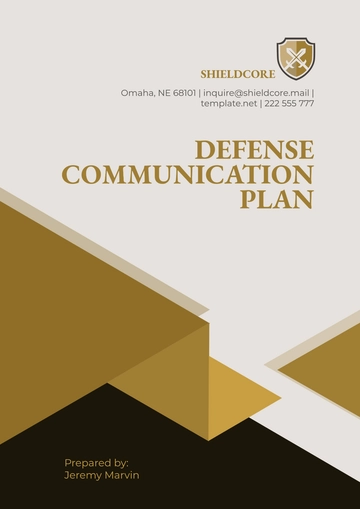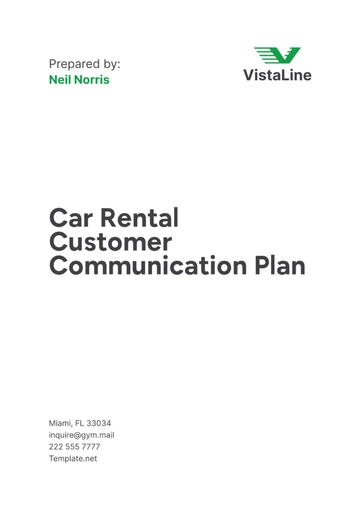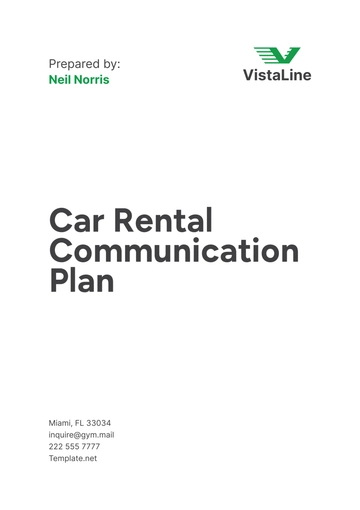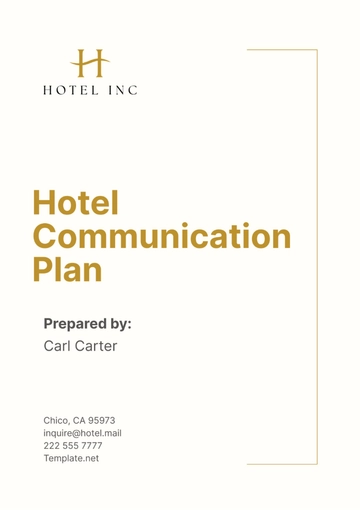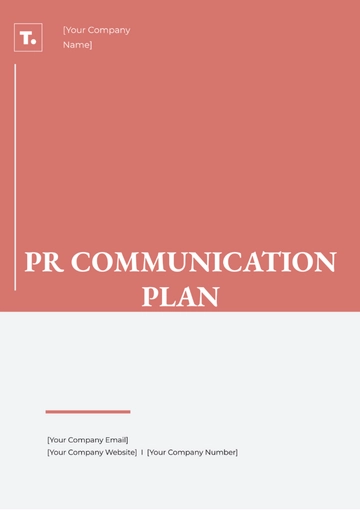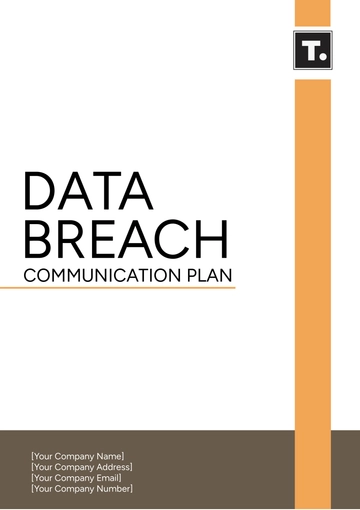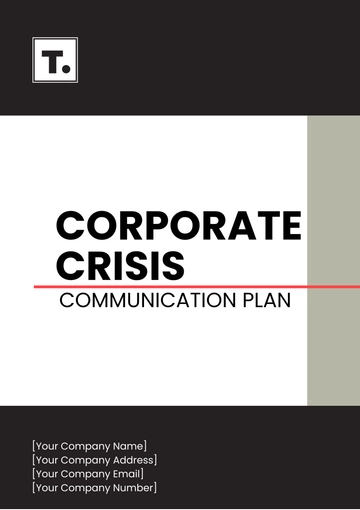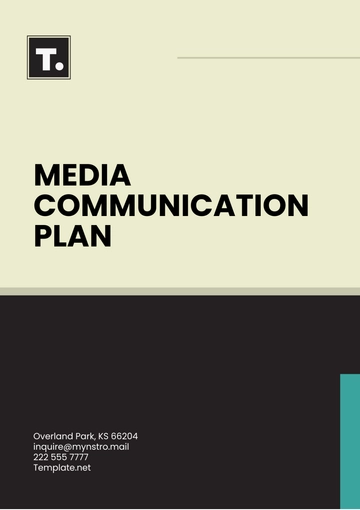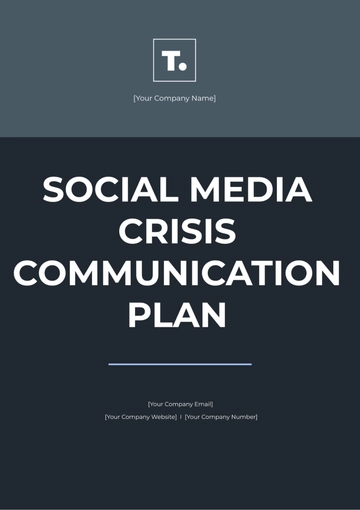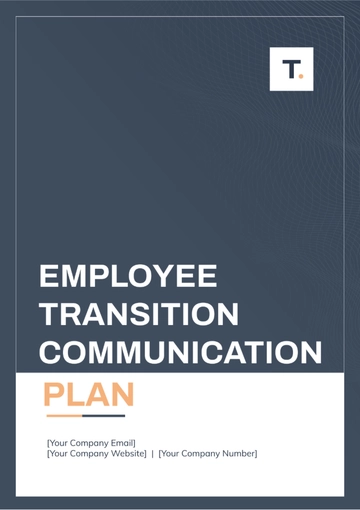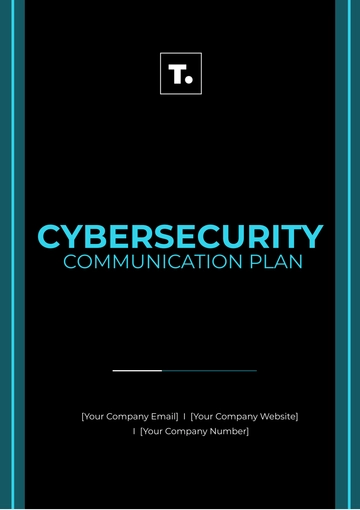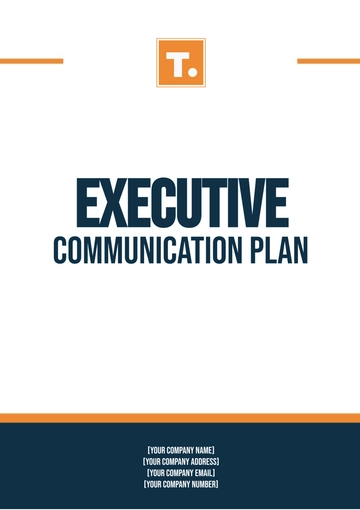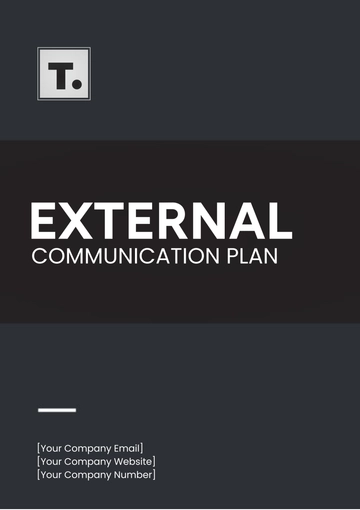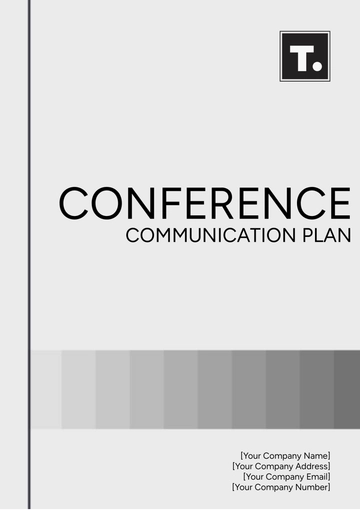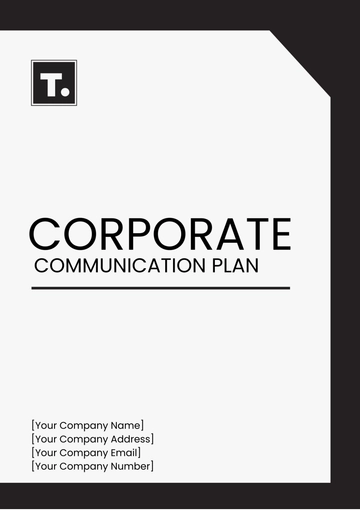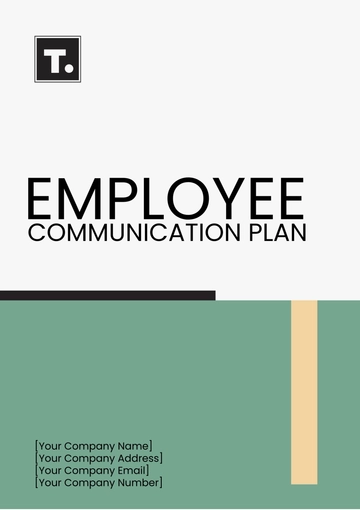Free Strategic Health & Safety Communication Plan
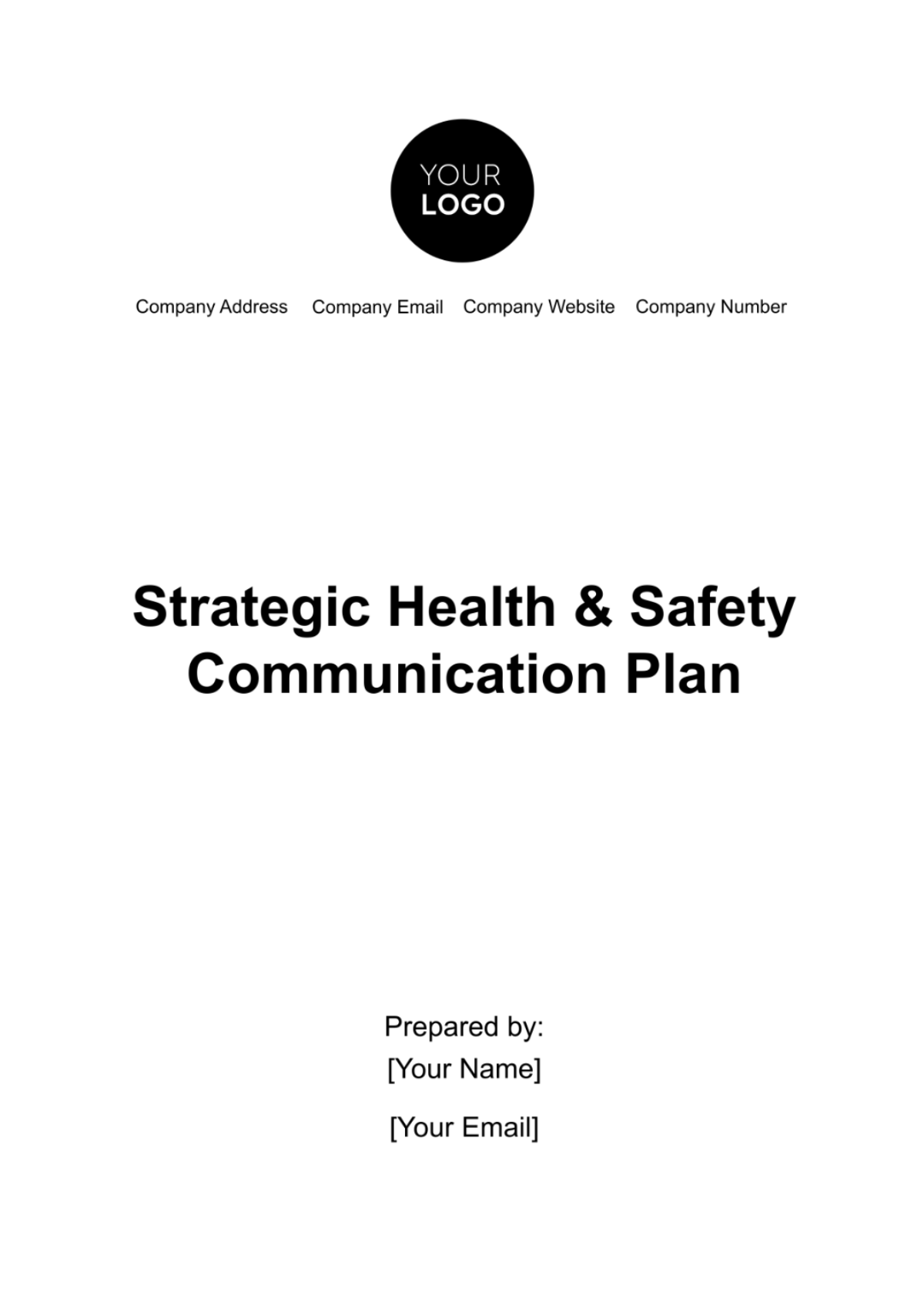
Executive Summary
In response to the evolving landscape of occupational health and safety, [Your Company Name] has developed this Strategic Health & Safety Communication Plan. The plan is designed to proactively address health and safety concerns within our organization, fostering a workplace environment that prioritizes the well-being of our employees.
A. Key Highlights:
Commitment to Safety: [Your Company Name] is unwavering in its commitment to ensuring the health and safety of all employees.
Compliance: This plan aligns with all relevant health and safety regulations, demonstrating our dedication to legal compliance.
Continuous Improvement: Emphasis on ongoing improvement, with a focus on communication, incident reporting, and emergency response.
Introduction
A. Background
As of [July 07, 2050], [Your Company Name] recognizes the need for a comprehensive Health & Safety Communication Plan. The background encompasses the historical context of our commitment to employee well-being and the need for an updated strategy to address emerging challenges.
B. Purpose
The primary purpose of this plan is to establish a robust framework for communicating health and safety information within [Your Company Name]. This includes creating awareness, reporting procedures, and emergency response protocols. By clearly defining our objectives, we aim to instill a culture of safety that permeates every level of the organization.
C. Scope
This plan encompasses all aspects of health and safety communication within [Your Company Name]. It applies to all employees, contractors, and stakeholders involved in our operations. The scope extends to both internal and external communication channels, reflecting our commitment to transparency and accountability.
Health and Safety Policy
A. Overview
At the core of [Your Company Name]'s operations is a steadfast commitment to maintaining a safe and healthy work environment. Our Health and Safety Policy reflects our dedication to prioritizing the well-being of our employees. This policy outlines the principles and values that guide our health and safety practices, fostering a culture of responsibility and accountability.
B. [Your Company Name] Commitment
[Your Company Name] is committed to:
Providing a safe and secure workplace for all employees.
Complying with all relevant health and safety laws and regulations.
Continuously improving our health and safety standards through regular assessments and feedback mechanisms.
C. Legal Compliance
In adherence to local, state, and federal regulations, [Your Company Name] ensures strict compliance with health and safety laws. This includes regular audits, risk assessments, and proactive measures to address any non-compliance issues. By aligning our policies with legal standards, we create a foundation for a secure and compliant work environment.
Communication Objectives
Effective communication is pivotal in promoting a culture of safety within [Your Company Name]. The communication objectives outlined below guide our efforts to enhance awareness, streamline incident reporting, improve emergency response, and foster continuous improvement.
A. Employee Awareness
Our goal is to ensure that every employee is well-informed about health and safety protocols. Through targeted communication campaigns, training programs, and regular updates, we aim to create a heightened awareness of potential hazards and safe practices.
B. Incident Reporting
Prompt and accurate incident reporting is crucial for preventing future occurrences. We strive to establish a transparent reporting process, encouraging employees to report incidents without fear of reprisal. This involves clear reporting procedures, accessible channels, and a commitment to investigating and addressing reported incidents promptly.
C. Emergency Response
In emergency situations, effective communication can be the difference between safety and risk. Our objective is to establish clear emergency communication protocols, ensuring that employees receive timely and accurate information during crises. This includes evacuation procedures, communication channels, and the formation of a dedicated Crisis Communication Team.
D. Continuous Improvement
Continuous improvement is embedded in our organizational DNA. We aim to foster a culture of learning from incidents, near misses, and feedback. Regular assessments, training program evaluations, and feedback mechanisms will contribute to the ongoing enhancement of our health and safety communication strategies.
Stakeholder Analysis
A. Identification of Stakeholders
Identifying and engaging with key stakeholders is integral to the success of our health and safety communication plan. Stakeholders include:
Employees: The primary beneficiaries and contributors to our health and safety initiatives.
Management: Responsible for implementing and overseeing health and safety policies.
Regulatory Authorities: Agencies governing health and safety standards that impact our operations.
Clients/Customers: Those who may be affected by our health and safety practices.
B. Stakeholder Engagement Strategy
Our strategy involves:
Regular Updates: Providing stakeholders with timely updates on health and safety initiatives.
Collaboration: Involving employees and management in the development and improvement of health and safety protocols.
Compliance Assurance: Maintaining open lines of communication with regulatory authorities to ensure adherence to standards.
Client/ Customer Communication: Transparently communicating our commitment to health and safety to clients and customers.
Communication Channels
A. Internal Channels
1. Intranet
The company intranet serves as a centralized hub for health and safety information. It hosts:
Policy Documents: Accessible for all employees to review and understand.
Training Modules: Interactive modules for ongoing education.
Incident Reporting Forms: Easily accessible for prompt reporting.
Email
Regular email communications include:
Monthly Newsletters: Highlighting key health and safety updates, success stories, and reminders.
Emergency Alerts: Timely notifications in emergency situations.
Training Invitations: Alerts for upcoming training sessions.
Meetings
Regular safety meetings are conducted:
Departmental Meetings: Where specific safety concerns and updates are discussed.
Quarterly Safety Reviews: Comprehensive reviews of incidents, near misses, and lessons learned.
Town Hall Meetings: Opportunities for company-wide discussions on health and safety matters.
B. External Channels
[Your Company Social Media]
Utilizing social media platforms for:
Public Announcements: Sharing company-wide achievements and safety milestones.
Educational Campaigns: Promoting general safety awareness and best practices.
[Your Company Website]
The company website serves as a public-facing platform for:
Policy Transparency: Displaying health and safety policies for public awareness.
Emergency Updates: Providing real-time updates during critical incidents.
Training and Education
A. Health & Safety Training Programs
Orientation
During the orientation process, new employees receive comprehensive training on health and safety, including:
Introduction to Policies: Overview of [Your Company Name]'s health and safety policies.
Interactive Modules: Engaging modules covering hazard identification, emergency procedures, and reporting.
Ongoing Training
To ensure continuous improvement, ongoing training programs include:
Monthly Toolbox Talks: Brief sessions addressing specific safety topics relevant to the workplace.
Refresher Courses: Periodic training sessions to reinforce key health and safety principles.
B. Communication Skill Development
Workshops
To enhance communication skills, workshops are conducted:
Active Listening: Improving employees' ability to receive and understand safety-related information.
Effective Reporting: Training on clear and concise incident reporting.
Resources
Supplementary resources are provided to employees for self-paced learning:
Online Learning Modules: Accessible resources for employees to deepen their understanding of health and safety.
Printed Materials: Brochures and posters strategically placed for quick reference.
Incident Communication Protocol
A. Reporting Procedure
A streamlined reporting procedure is in place:
Online Reporting System: Employees can report incidents promptly through a user-friendly online platform.
Anonymous Reporting Option: Ensures confidentiality for sensitive matters.
B. Investigation Process
Following incident reports, a structured investigation process is initiated:
Immediate Response Team: Rapid response team deployed for quick assessment and initial actions.
Root Cause Analysis: In-depth investigation to identify underlying causes and preventive measures.
C. Communication to Employees
Transparent communication with affected employees is prioritized:
Timely Updates: Regular updates on the status of incident investigations and actions taken.
Lessons Learned Sessions: Shared learnings from incidents to promote continuous improvement.
D. External Communication
For incidents requiring external communication, the approach involves:
Regulatory Notifications: Complying with legal obligations for reporting specific incidents.
Community Outreach: Engaging with the local community to address concerns and provide reassurance.
Monitoring and Evaluation
A. Key Performance Indicators (KPIs)
To assess the effectiveness of our health and safety communication efforts, [Your Company Name] has established key performance indicators (KPIs), including:
Incident Reporting Rate: Monitoring the frequency of reported incidents.
Training Participation: Tracking employee engagement in training programs.
Feedback Response Time: Measuring the speed of response to employee feedback.
B. Periodic Audits
Regular audits are conducted to ensure compliance and identify areas for improvement:
Internal Audits: Conducted quarterly to assess adherence to health and safety policies.
External Audits: Engaging third-party auditors annually to provide an objective assessment.
C. Feedback Mechanisms
Continuous improvement is driven by feedback from employees:
Anonymous Surveys: Regular surveys to gather honest feedback on the effectiveness of health and safety communication.
Suggestion Box: Anonymously collect suggestions for improvement from employees.
Emergency Response Plan
In recognition of the critical importance of effective emergency response, [Your Company Name] has developed a comprehensive Emergency Response Plan. This plan ensures the safety and well-being of our employees and stakeholders in the event of unforeseen incidents. The Emergency Response Plan comprises the following key components:
A. Evacuation Procedures
Clear and well-defined evacuation procedures are in place:
Evacuation Routes: Designated routes for safe evacuation, clearly marked throughout the premises.
Assembly Points: Pre-determined assembly points to facilitate headcounts and communication.
B. Communication during Emergencies
Communication is paramount during emergencies, and [Your Company Name] has implemented robust strategies:
Emergency Notification System: Instant notification to all employees through various communication channels.
Two-Way Communication: Establishing two-way communication to receive real-time updates from employees.
C. Crisis Communication Team
A dedicated Crisis Communication Team has been formed:
Team Composition: Comprising representatives from different departments with assigned roles.
Training and Drills: Regular training sessions and drills to ensure the team is well-prepared for crisis situations.
Communication Protocols: Clear protocols for internal and external communication during crises.
Budget and Resources
A. Allocation of Resources
[Your Company Name] allocates resources strategically to support health and safety communication initiatives:
Dedicated Team: A health and safety communication team responsible for planning and implementation.
Technology Investments: Upgrading communication platforms for efficient incident reporting and emergency communication.
B. Budget Breakdown
A detailed breakdown of the budget for health and safety communication includes:
Training Materials: Costs associated with developing and updating training materials.
Technological Infrastructure: Investments in communication technologies and software.
External Services: Budget for third-party audits and consultancy services.
C. Resource Responsibilities
Clear responsibilities are assigned to ensure effective utilization of allocated resources:
Team Roles: Roles and responsibilities defined for the health and safety communication team.
Training Coordinator: Designated personnel responsible for coordinating training programs.
Emergency Response Team: Clearly outlined roles for individuals within the emergency response team.
- 100% Customizable, free editor
- Access 1 Million+ Templates, photo’s & graphics
- Download or share as a template
- Click and replace photos, graphics, text, backgrounds
- Resize, crop, AI write & more
- Access advanced editor
Introducing Template.net's Strategic Health & Safety Communication Plan Template. This editable and customizable template empowers organizations to develop comprehensive communication strategies for promoting health and safety initiatives. Utilize our Ai Editor Tool to tailor the plan to your specific needs, ensuring effective dissemination of crucial information and fostering a safer work environment.

